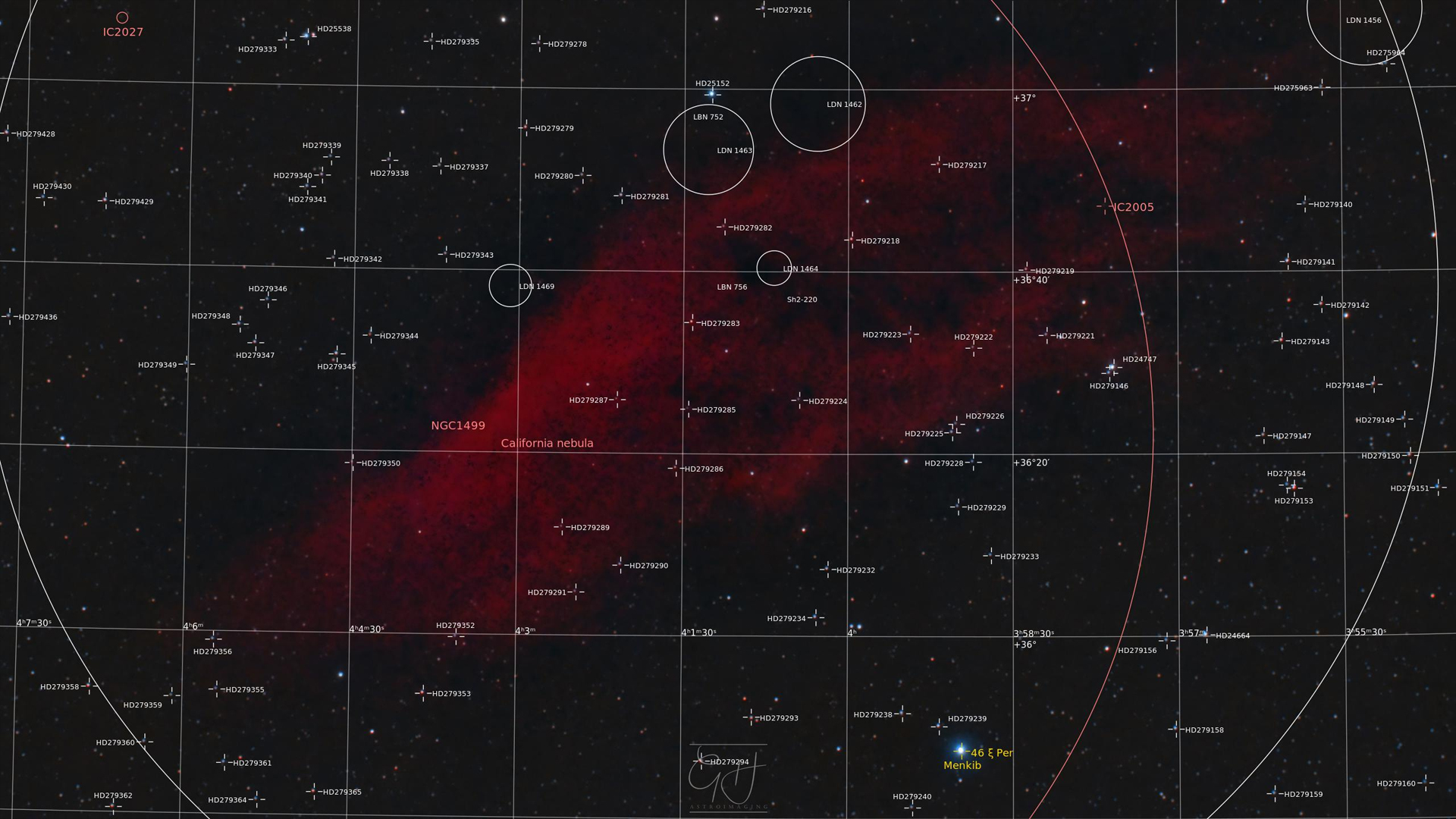The California Nebula, February 21 2019


The California Nebula is named for its resemblance to the shape of the state of California. It also goes by the names NGC1499 and Sh2-220.
More information about this object can be found on its Wikipedia page.
I was very happy to receive a new telescope as a Christmas gift in 2018, and I also added a filter to my equipment list as well as another camera to allow me to set up both of my scopes at the same time. This image was the first one I captured using all of these.
This nebula is actually large in the sky (around 5 times the diameter of a full moon) so the shorter focal length of my new refractor scope (Skywatcher Evostar 72ED) of around 430mm was suitable for me to fit this object in the size of my camera sensor. The filter (Baader Planetarium UHC-S) enhances the contrast between the nebula and the background sky by blocking much of the light pollution that comes from sodium and mercury vapour street lights, whilst allowing most the the emission light that comes from the nebula (in this case mostly from hydrogen, which emits at 656.28nm in the deep red area of the visible spectrum).
You can view this image in the WorldWideTelescope by clicking here.










Sign in to enable commenting